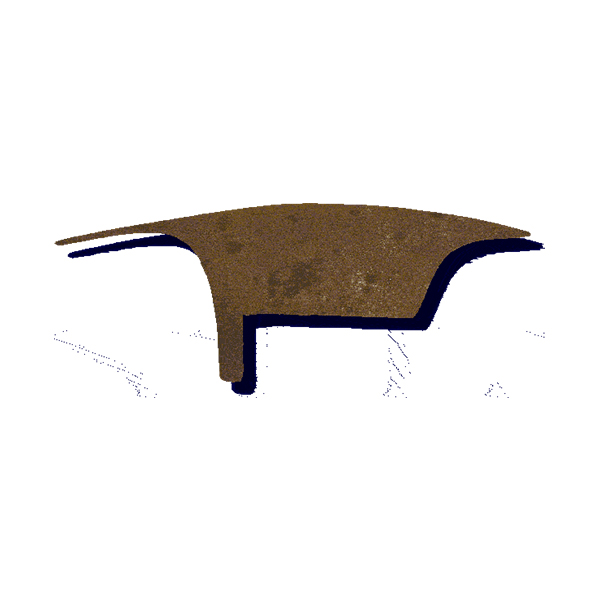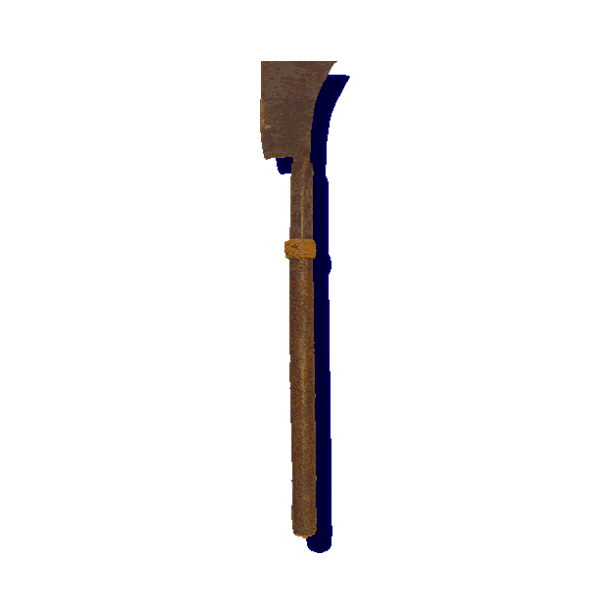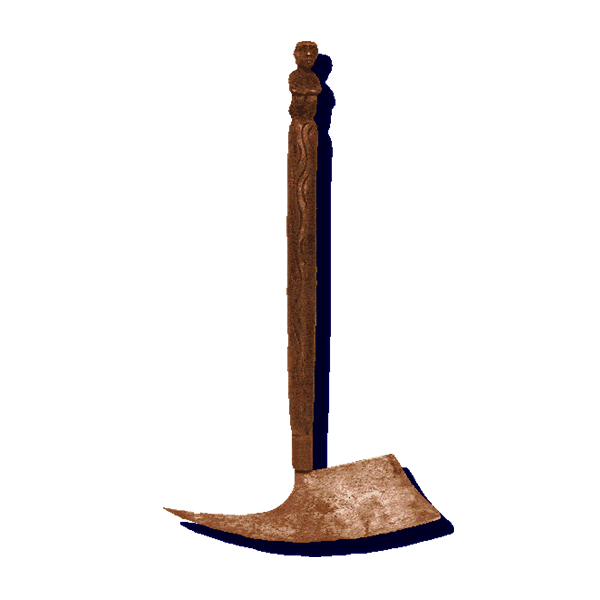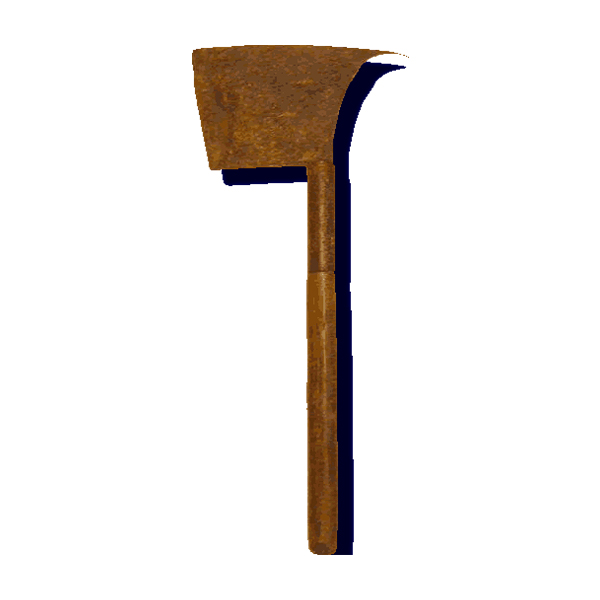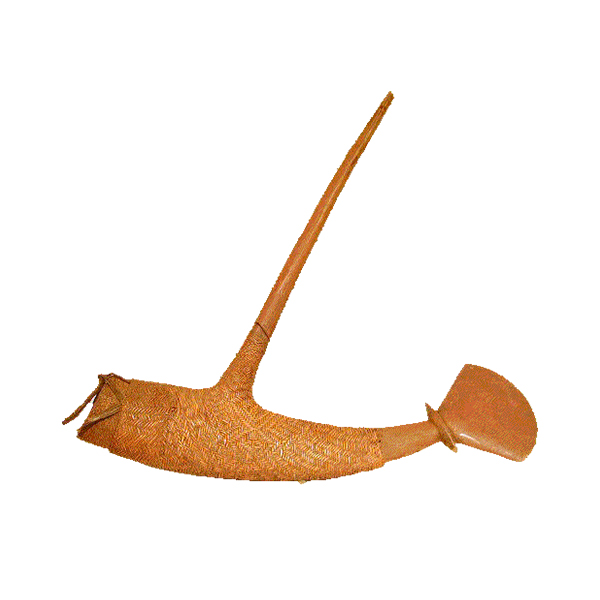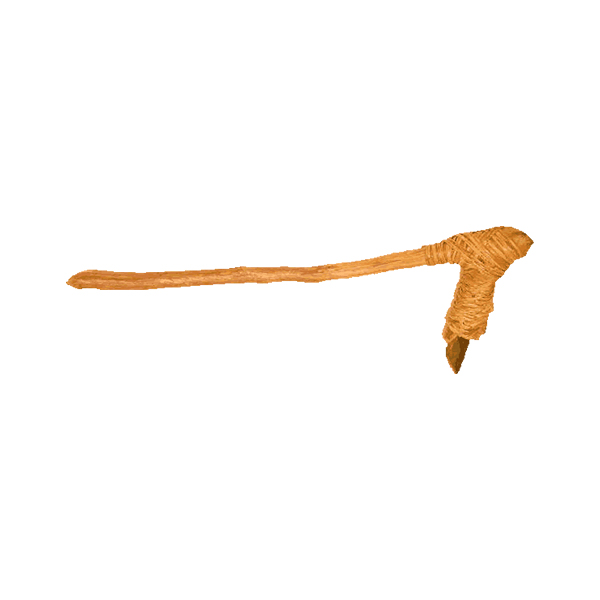Axes
Although commonly thought of as "headhunter axes," the battle ax is simply the hand weapon of tribes that do not make western-style swords; both tools could be and were used in the taking of heads in different parts of the islands. Battle axes have been mostly employed by the tribes of northern Luzon, probably by virtue of the fact that their blades are easier to forge than the long blades of swords. These axes are still used, albeit for less sanguine purposes.
There are, of course, differences between groups; Kalinga head axes are slender with a curved blade, while those of the Bontok are heavier with a straight blade. The former require a special dexterity when used for cutting wood and clearing fields. For cutting hair, the blade is aimed through a slot in a piece of bamboo.
Headhunting was practiced for three reasons: revenge, prestige, and the sacrificial power that a head was thought to have had with the gods or anitos. The revenge motive is obvious: where a murder or similarly serious crime occurred, it was impingent? on the pride of the victim's family to form a war party and take a compensatory head from the family of the offender; extended blood feuds were often the result. Prestige hunting was largely a way for young warriors to show their prowess; they often descended on a distant villages in bands, and while some spared the lives of women and children, others showed no such discrimination. The religious motive is more complex, and varied greatly from place to place. The most widespread belief was that taking the head of a stranger would aid a recently deceased relative in the afterlife.
Religious rites and feasting usually both preceded and followed a headhunting expedition; the latter were apt to last for several days. The leader of the particular expedition usually received the head or heads, along with the right to wear prestige ornaments: an earring among the Ifugao, a red head-scarf or ornamentation thereof among the Visayans. The head was buried beneath the house until the flesh was gone; the skull was then dug up and used to decorate the house. The Bontok used the jaw as a door knocker.
Of course, on the other side the story was different. The family of the victim would hold a war dance and formally vow revenge before burying the headless corpse in a sitting position, spear in hand, near the path from which the invaders were thought to have come. Later, divination rituals would be held to select a warrior to lead a revenge party.
Since there was little concentration of power, and weapons were inefficient, the actual carnage and suffering that resulted from headhunting and warfare in the Philippines was naturally quite limited when compared to places like Europe and China. From his experience with the Bontok in 1902, Alfred Jenks reported:
Frequently a battle ends when a single head is taken by either side, the victors calling out: "Now you go home, and we will go home; if you want to fight some other day, all right." In this way battles are ended in an hour or so, and often in half an hour. However, they have battles lasting half a day where ten or a dozen heads are taken. Seven pueblos of the lower Quiangan region [Bontok] went against the scattered groups of dwellings in the Banawi area [Ifugao] of the upper Quiangan region in May, 1902. The invaders had seven guns, but the people of Banawi had more than sixty - a fact the invaders did not know until too late. However, they did not retire until they lost one hundred and fifty heads. They annihilated one of the groups of the enemy getting about fifty heads, and burned their dwellings. This is by far the fiercest Igorot batttle of which there is memory, and its ferocity was largely due to firearms.
he headaxe has been replaced by the bolo in general use since the former was outlawed by the Americans in the early 20th century. However many people still prefer to use their headaxes as tools.
